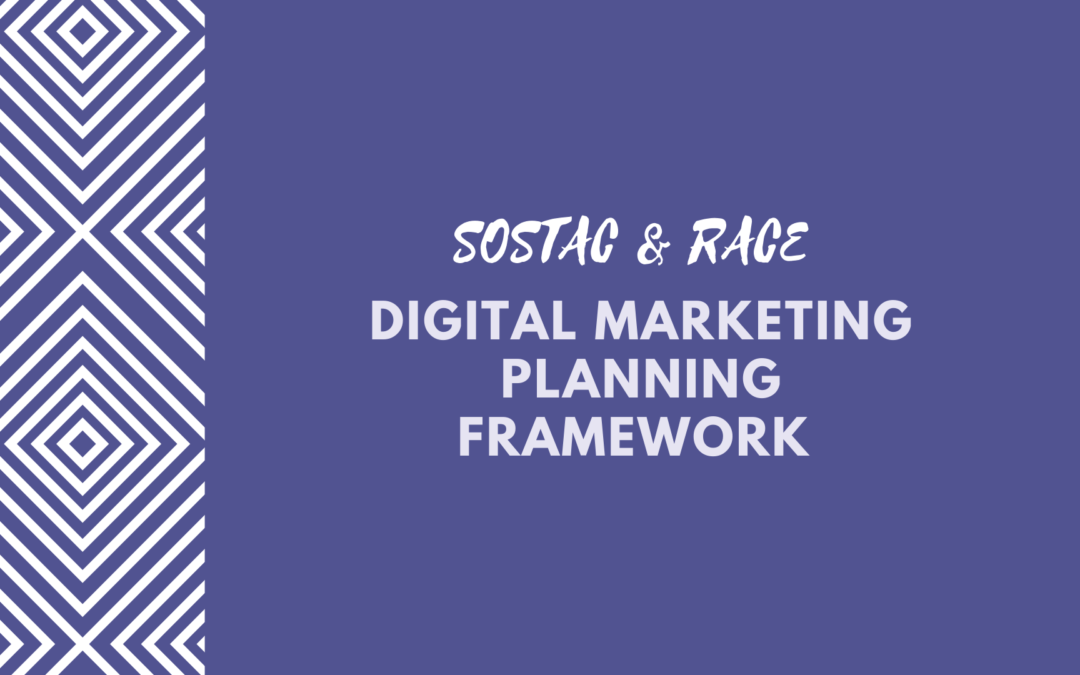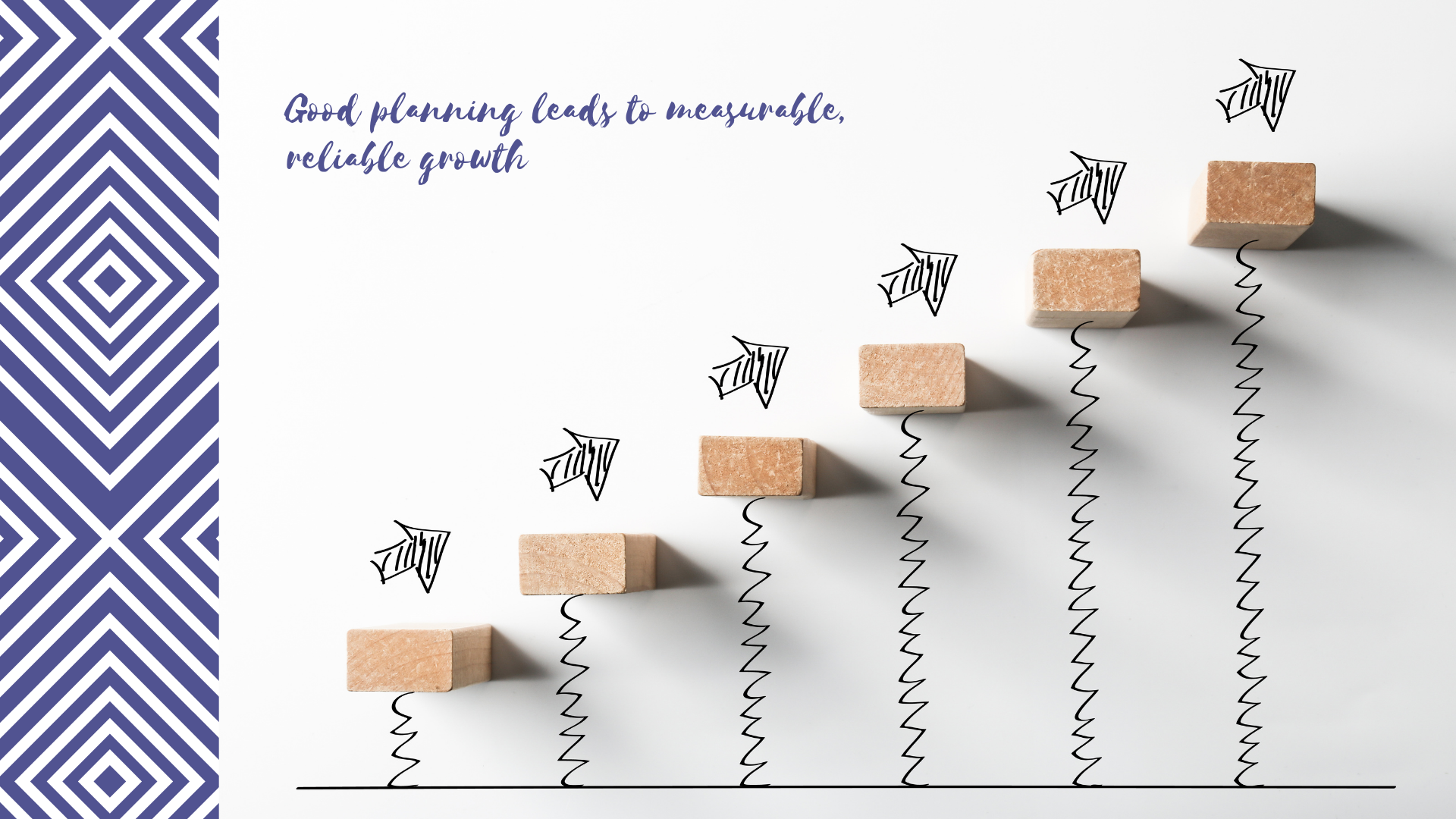Planning – SOSTAC Framework
The SOSTAC framework is a popular tool for developing effective plans when it comes to digital marketing.
Created by PR Smith, the model acronym stands for:
- SITUATION – where are we now?
- OBJECTIVE – where do we want to be?
- STRATEGY – how will we get there?
- TACTICS – what specific actions do we need to take?
- ACTION – who will do what, by when?
- CONTROL – how will we know if we are successful?
This framework is helpful for digital marketing planning as it helps ensure that all aspects of the plan are considered, from where the business currently stands to how success will be measured. Taking a comprehensive approach can help avoid any gaps in the plan and ensure that all elements work together towards common objectives.
SOSTAC Framework Key Points
When creating a digital marketing plan using the SOSTAC framework, it is essential to keep the following points in mind:
- Situation: Conduct a comprehensive audit of the current situation, including analysing the business’s strengths, weaknesses, opportunities, and threats. Understanding where you currently are will provide a solid foundation for setting objectives and developing strategies. The key here is brutal honesty.
- Objective: Set realistic and achievable goals aligned with the business’s overall objectives. Be sure to include timeframes and benchmarks for success.
- Strategy: Develop a comprehensive strategy for achieving the objectives, considering the resources available and the target audience. Resources include human resources, budget and tools.
- Tactics – select the most effective tactics for implementing the strategy and achieving the objectives. Common digital tactics could include SEO, content marketing, social media and paid advertising.
- Action – assign responsibility for each task and set timelines for completion. Clear assignments ensure that the executed plan is effective and efficient.
- Control – establish metrics for measuring success and monitoring progress. Defined success and continued monitoring simplify course corrections and quickly identify when you meet your objectives.
By following these steps, you can create a detailed and actionable digital marketing plan to help your business achieve its goals.
Remember to review and update the plan regularly to remain relevant and practical.
Free 90-day SOSTAC planning template for your business.
SOSTAC and RACE – The Customer Journey
The SOSTAC framework is a popular tool for developing effective plans, but it’s also helpful in understanding your customers’ journey. By mapping out the steps in your customer’s decision-making process, you can better understand their needs and develop targeted marketing strategies.
The customer journey typically includes the following stages:
- Reach – Awareness – The customer becomes aware of a need or wants.
- Act – Consideration – The customer begins to research solutions to their problem.
- Convert – Decision – The customer narrows down their options and makes a purchase.
- Engage – Loyalty – The customer continues to use the product or service and may become an advocate.
By understanding the customer journey, you can develop marketing strategies that target each stage of the decision-making process. For example, an awareness-stage strategy would get potential customers to notice your product or service for the first time across multiple channels. In contrast, a consideration-stage strategy would get them interested in what you have to offer moving them towards a decision. Finally, engagement strategies would focus on repeat conversions and referrals from loyal advocates.
ING Australia Example:
ING Australia does engagement campaigns well. I’ve used them for twenty years between two continents. The user interface is simple and easy to use. The fee-free banking feels like banking should. The customer service is unparalleled, so, of course, when they send me a link to share with my friends, I do it, and to sweeten the deal, ING offers a bonus of $100 for my friends and me. These referral campaigns happen once or twice a year, and I have no doubt they successfully add a welcomed boost of new accounts. I know because I’ve benefited from the campaign.
Referrals are warm leads and cost significantly less.They are also more likely to be loyal to the brand, like the customers that referred them. The Life Time Value (LTV) of these new customers is significantly more than the email and the $200 it cost ING to acquire them.
SOSTAC Engagement Campaign Planning for ING
Below is a lightweight example of how a financial brand like ING Australia can use the SOSTAC framework to create an effective marketing strategy with the customer journey in mind.
SITUATION – where are we now? X million loyal customers.
OBJECTIVE – where do we want to be? xx million loyal customers
STRATEGY – how will we get there? referral campaign to loyal customers
TACTICS – what specific actions do we need to take? Draft a referral email outlining criteria, personalised code and rewards for the referee and new customers. Make the link easy to email and social share. Incorporate reminder and link in the online banking portal.
ACTION – who will do what by when? Campaign start date set. Draft email by XX date. Comms manager to schedule and send. Monitor email opens new accounts, referral codes, and deposits. Resend the email to all loyal customers who haven’t opened the email X days later. Resend reminder email to all who have opened and not clicked one week from the end of the referral promotion.
CONTROL – how will we know if we are successful? Measure links clicked in the email. Measure new accounts. Measure new deposits.
By understanding the customer journey and mapping out a plan that targets the engagement stage, ING can reward loyalty and drive new conversions faster than approaching potential clients at the awareness stage.
How does this work for your business?
You may need an awareness, consideration or decision campaign to grow your business, but regardless of the customer journey stage, use the simple SOSTAC framework to help you measurably reach your goals.
If you’re looking to create a comprehensive digital marketing plan for your business, we recommend using the Smart Insights RACE framework with the SOSTAC model. It starts with critically evaluating each stage of your marketing funnel and developing strategies tailored to your specific goals.
When used together, these two frameworks will give you a comprehensive view of your digital marketing strategy and help you create an actionable plan that will drive growth for your business.
Don’t have time to do it yourself?
We can help. It’s as simple as sending an email and setting up a time. Then, we’ll bring the coffee and walk you through an actionable plan.



